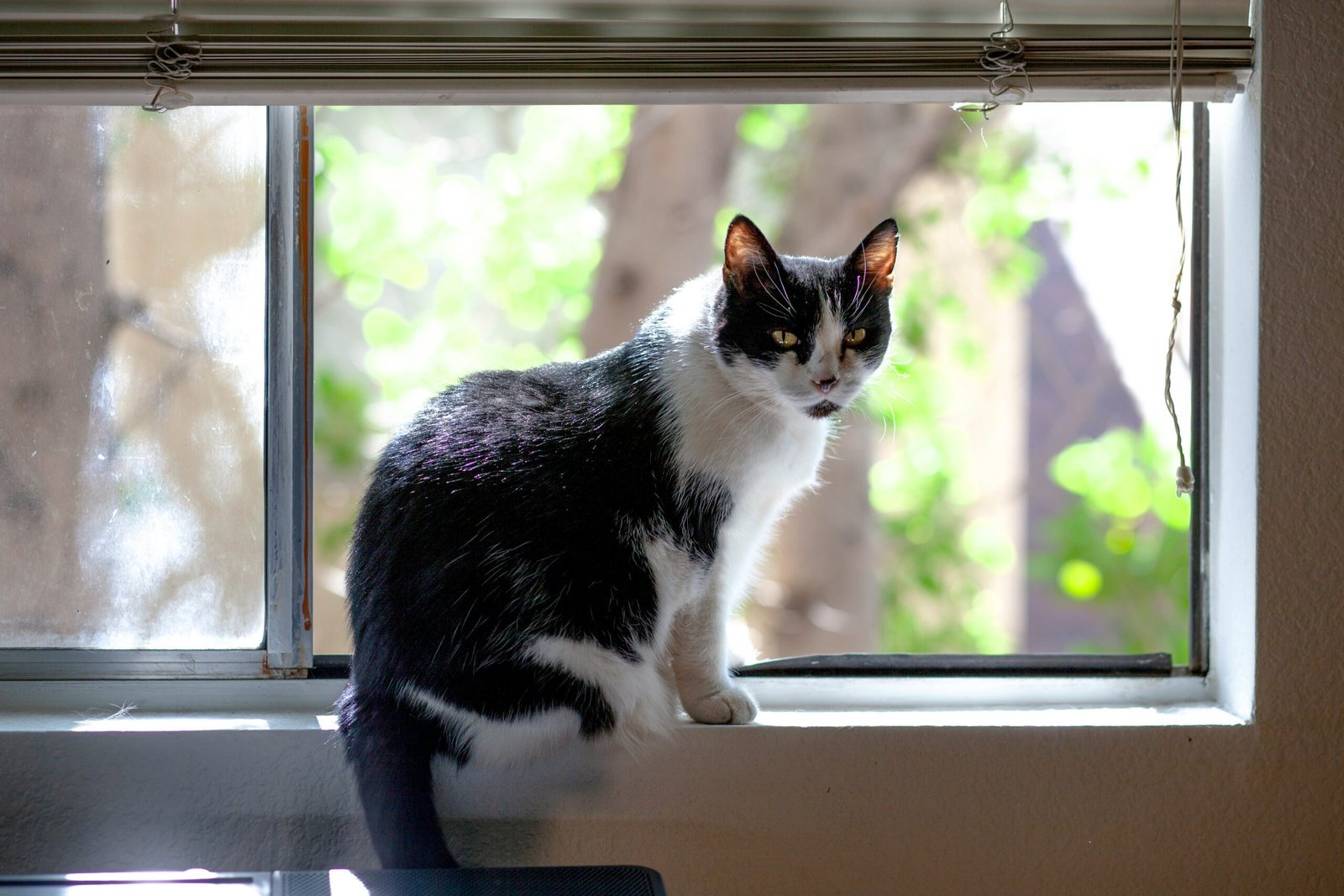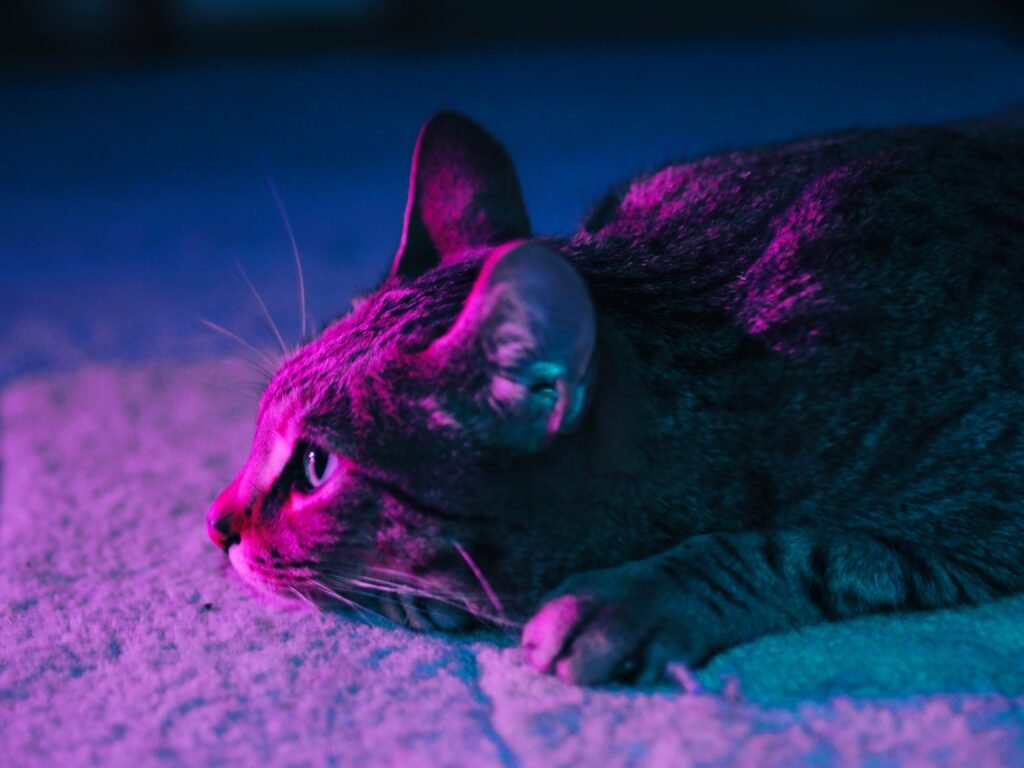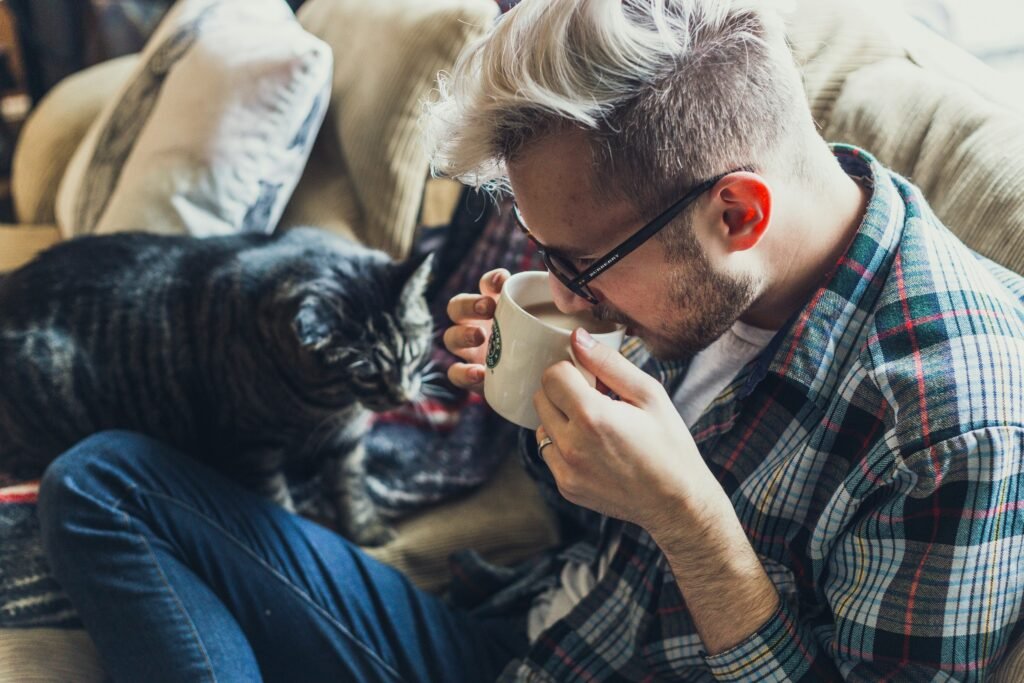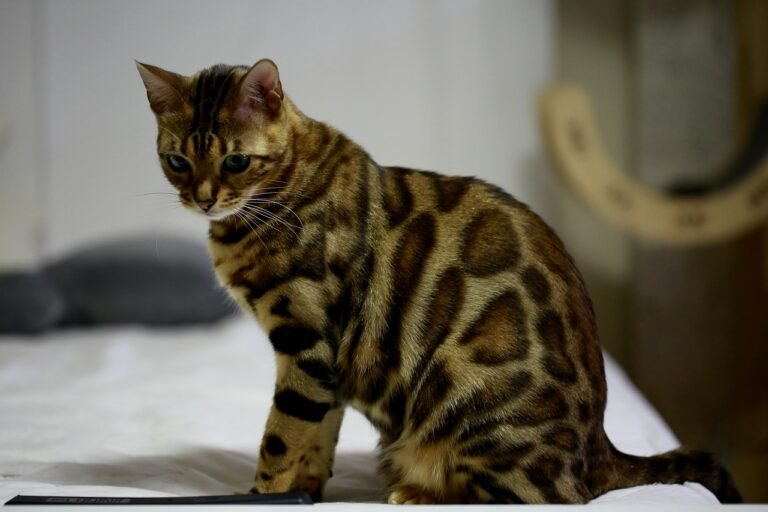
Hey there, cat lovers! Let’s talk about indoor Vs outdoor cats. It’s a big deal for our furry friends!
Should your kitty stay inside or go out? It’s not just about where they sleep. It’s about their whole life! Some people say indoor cats are the way to go. Others think cats should roam free. Let’s look at both sides!
Indoor cats are safe at home. No scary animals can get them. They don’t get sick as much. But they might get bored sometimes. Outdoor cats get to explore and hunt. That’s fun for them! But cars and mean animals can hurt them. They might catch more illnesses, too.
We’re going to talk about all of this. We’ll see how being inside or outside affects cats. We’ll examine their health and happiness of indoor Vs outdoor cats.
By the end, you’ll know a lot more about indoor Vs outdoor cats. You’ll be ready to choose what’s best for your kitty!
Indoor Vs. Outdoor Cats – Which is the Best Choice for You?
Cats have been cherished companions for centuries, adapting to various lifestyles and environments. One of the cat owners’ most significant decisions is keeping their cats indoors or allowing them to roam outside. This choice can impact a cat’s health, behavior, and overall quality of life.
In this detailed guide, we’ll explore the pros and cons of indoor vs outdoor cats, considering factors such as health, safety, mental stimulation, and environmental impact.
1. Health and Safety of Indoor Vs Outdoor Cats
Indoor Cats
Pros:
- Reduced Disease Risk: Indoor cats are less exposed to contagious diseases, parasites, and infections. They are less likely to contract feline leukemia, feline immunodeficiency virus (FIV), and various parasitic infestations like fleas and ticks.
- Protection from Predators and Accidents: Indoor cats are safe from predators such as dogs, coyotes, and cars. They also avoid injuries from fights with other animals.
- Controlled Diet and Weight: Owners can monitor an indoor cat’s diet more easily, preventing obesity and related health issues.
Cons:
- Potential for Boredom: Without proper mental and physical stimulation, indoor cats can become bored, leading to behavioral issues like scratching furniture or excessive meowing.
- Lack of Exercise: Indoor cats might not get enough exercise, which can contribute to obesity and other health problems.
Outdoor Cats
Pros:
- Increased Physical Activity: Outdoor cats have more opportunities for exercise, which can help maintain a healthy weight and overall physical condition.
- Natural Behavior Expression: Outdoor environments allow cats to express natural behaviors such as hunting, climbing, and exploring.
Cons:
- Higher Risk of Disease and Parasites: Outdoor cats are more susceptible to diseases, parasites, and infections. They may contract illnesses from other animals or contaminated environments.
- Danger from Predators and Accidents: Outdoor cats face threats from predators, traffic, and other hazards, increasing the risk of injury or death.
- Uncontrolled Diet: Outdoor cats may scavenge or hunt, leading to an unbalanced diet and potentially ingesting harmful substances.
2. Mental and Emotional Well-being of Indoor Vs Outdoor Cats

Indoor Cats
Pros:
- Stable Environment: Indoor cats benefit from a consistent environment, reducing stress and anxiety. They have regular access to food, water, and shelter.
- Close Bond with Owners: Indoor cats often develop strong bonds with their owners due to increased interaction and attention.
Cons:
- Boredom and Stress: Indoor cats may become bored or stressed without adequate stimulation, leading to behavioral issues. Enrichment activities and interactive toys are essential to keep them engaged.
- Limited Natural Experiences: Indoor cats miss out on natural experiences like hunting and exploring, affecting their mental stimulation.
Outdoor Cats
Pros:
- Natural Stimulation: Outdoor cats enjoy diverse and stimulating environments, which can keep them mentally engaged and satisfied.
- Independence: Outdoor cats often develop independence and confidence through their experiences.
Cons:
- Unpredictable Environment: Outdoor cats face unpredictable situations, which can cause stress or anxiety. They may encounter aggressive animals, harsh weather, or unfamiliar territories.
- Reduced Human Interaction: Outdoor cats may interact less with their owners, potentially weakening the human-animal bond.
3. Environmental Impact of Indoor Vs Outdoor Cats
Indoor Cats
Pros:
- Minimal Impact on Wildlife: Indoor cats do not hunt or kill wildlife, reducing their impact on local ecosystems and bird populations.
- Controlled Waste: Litter boxes provide a controlled method for waste disposal, preventing contamination of the environment.
Cons:
- Resource Use: Indoor cats rely on human resources for food, water, and waste management, which can contribute to environmental strain if not managed sustainably.
Outdoor Cats
Pros:
- Natural Waste Disposal: Outdoor cats often use the outdoors as a litter box, reducing the need for litter management.
Cons:
- Impact on Wildlife: Outdoor cats can significantly impact local wildlife, particularly birds and small mammals. They are known to be prolific hunters, which can disrupt ecosystems.
- Environmental Contamination: Outdoor cats may contribute to environmental contamination through their waste, affecting soil and water quality.
4. Enrichment and Stimulation for Indoor vs Outdoor Cats

Indoor Cats
Pros:
- Variety of Toys and Activities: Owners can provide a range of toys, climbing structures, and interactive games to keep indoor cats stimulated and active.
- Controlled Environment: Indoor cats can enjoy a safe and controlled environment tailored to their needs, including scratching posts, hiding spots, and window perches
Cons:
- Owner Responsibility: Keeping an indoor cat entertained and enriched requires effort and creativity from the owner. Neglecting this can lead to boredom and stress for the cat.
Outdoor Cats
Pros:
- Natural Exploration: Outdoor cats benefit from natural environments, offering endless opportunities for exploration, hunting, and climbing.
- Dynamic Stimuli: The ever-changing outdoor environment provides continuous mental stimulation, preventing boredom.
Cons:
- Unpredictable Hazards: While outdoor environments are stimulating, they also pose risks that can lead to injury or stress.
- Potential for Lost Cats: Outdoor cats may wander far from home, increasing the risk of becoming lost or separated from their owners.
5. Lifespan and Longevity of Indoor Vs Outdoor Cats
Indoor Cats
Pros:
- Longer Lifespan: Indoor cats generally live longer than outdoor cats due to reduced exposure to dangers such as disease, predators, and accidents. The average lifespan of an indoor cat can range from 12 to 20 years.
- Regular Veterinary Care: Indoor cats are more likely to receive regular veterinary care, vaccinations, and preventive treatments, contributing to their overall health and longevity.
Cons:
- Potential for Overprotection: Overprotective environments limit a cat’s experiences, impacting their overall happiness and quality of life.
Outdoor Cats
Pros:
- Rich Experiences: Outdoor cats enjoy a variety of experiences that can contribute to a fulfilling, albeit shorter, life.
Cons:
- Shorter Lifespan: The average lifespan of an outdoor cat is typically shorter, ranging from 5 to 10 years, due to the increased risks they face.
- Less Consistent Health Care: Outdoor cats may not receive regular veterinary care, vaccinations, or preventive treatments, increasing their risk of health issues.
Managing the Best of Both Worlds: Compromise Solutions to the Question of Indoor Vs Outdoor Cats

Many cat owners seek a balance between the benefits of both indoor and outdoor living. Here are some compromise solutions to help you navigate the indoor Vs outdoor cats debate:
Indoor/Outdoor Access
1. Supervised Outdoor Time
Allowing cats supervised outdoor time can give them the benefits of fresh air and exploration while minimizing risks. Here’s how you can manage this:
2. Leash Training:
Like dogs, some cats can be trained to walk on a leash. Start with a comfortable harness and let your cat get used to wearing it indoors. You can gradually take them outside on a leash for short periods. This way, your cat can explore the outside world safely under your watchful eye.
3. Outdoor Enclosures (Catios):
A catio is a safe, enclosed outdoor space designed specifically for cats. It allows them to enjoy the outdoors without the dangers of free-roaming. You can either buy a premade catio or build one yourself. Include climbing structures, plants, and perches to create a stimulating environment. Catios come in various sizes, from small window boxes to large walk-in structures that accommodate multiple cats.
4. Enclosed Outdoor Spaces:
Building a secure outdoor enclosure (catio) allows cats to experience the outdoors safely. These enclosures can be designed to include climbing structures, plants, and perches.
5. Climbing Structures:
Cats love to climb. Including various climbing options in your catio, such as shelves, ramps, and tree branches, will keep your cat active and entertained.
6. Plants and Nature
Incorporating cat-safe plants and natural elements like grass patches can provide sensory stimulation and mimic the natural environment.
7. Perches and Platforms
High perches and platforms allow your cat to observe their surroundings, making the enclosure even more appealing.
Environmental Enrichment
Even if your cat primarily stays indoors, you can create an enriching environment that keeps them happy and stimulated. Here are some ideas:
1. Interactive Toys
Providing a variety of toys that stimulate hunting and playing instincts can keep indoor cats engaged. Consider these options:
2. Feather Wands
These toys mimic the movement of birds and can encourage your cat to jump and pounce.
3. Laser Pointers
Laser pointers are great for stimulating your cat’s hunting instincts. Just be sure to never shine the light directly into their eyes.
4. Puzzle Feeders
These toys make your cat work for their food, providing mental stimulation and preventing boredom.
5. Climbing and Hiding Spots
Creating vertical spaces and hiding spots within the home can satisfy a cat’s natural desire to climb and explore. Here are some ideas:
6. Cat Trees
Multi-level cat trees with platforms, scratching posts, and hiding spots can provide hours of entertainment and exercise.
7. Wall Shelves
Installing shelves on your walls at varying heights allows your cat to jump and climb. You can create a fun and challenging climbing route for them.
8. Boxes and Tunnels
Simple cardboard boxes and tunnels can provide hiding spots and places to explore. Cats love to hide and play in confined spaces.
9. Window Perches
Placing perches near windows allows indoor cats to observe the outside world, offering mental stimulation.
10. Window Seats
You can buy or make a window perch where your cat can lounge and watch the world outside. Birds, squirrels, and passing cars can all provide visual stimulation.
11. Bird Feeders
Placing bird feeders outside your windows can attract birds, giving your cat something interesting to watch.
By incorporating these compromise solutions, you can create a balanced lifestyle that combines the safety of indoor living with the stimulation and enrichment of outdoor experiences. This approach addresses both indoor and outdoor cats’ needs, ensuring they lead happy, healthy lives.
Responsible Cat Ownership for Indoor Vs Outdoor Cats

Responsible ownership is crucial whether you choose to keep your cat indoors or allow them outside.
Here are some essential tips for managing indoor Vs outdoor cats. By following these tips, you can ensure your cat leads a happy and healthy life, no matter where they spend their time.
Indoor Cats
1. Regular Veterinary Checkups:
Ensure your indoor cat receives regular veterinary care. These checkups include vaccinations, preventive treatments, and routine checkups to catch any health issues early. Regular vet visits help keep your cat healthy and happy.
2. Proper Diet and Exercise:
Monitor your indoor cat’s diet to ensure they eat the right amount and type of food. Obesity can be a problem for indoor cats, so it’s important to provide opportunities for exercise. Use toys and activities to keep your cat moving and active.
3. Mental Stimulation:
Provide a variety of toys, scratching posts, and interactive activities to keep your indoor cat mentally stimulated. Cats need to play and explore to stay happy. Rotate toys regularly to keep them interesting and engage your cat in play sessions daily.
Outdoor Cats
1. Identification:
Ensure your outdoor cat wears a collar with an ID tag. The tag should have your contact information in case your cat gets lost. Microchipping your cat is also important. A microchip is a small device implanted under the skin that contains your contact details, making it easier to reunite you with your cat if they are found.
2. Vaccinations and Parasite Control:
Keep your outdoor cat up to date on vaccinations. Outdoor cats are more exposed to diseases and must receive all necessary shots. Use preventive treatments for fleas, ticks, and other parasites. These treatments protect your cat from pests that can cause discomfort and illness.
3. Safe Outdoor Spaces:
Create a safe outdoor environment for your cat. Supervise your cat’s outdoor time to ensure that the cat does not encounter dangerous situations. If possible, provide an enclosed outdoor space like a catio. Such spaces allow your cat to enjoy the outdoors safely without the risks of free-roaming.
Conclusion
Whether to keep a cat indoors or let them outside is a big choice. It depends on a few things, like your cat’s personality, where you live, and how much you can do to keep them entertained and safe.
Indoor cats live in a controlled, safe space, making them less likely to get sick or hurt. But they need many toys and activities to keep them from getting bored. Outdoor cats get natural stimulation and exercise but have more risks, like predators, diseases, and accidents.
By weighing the pros and cons of indoor vs outdoor cats and finding compromise solutions, you can choose to keep your cat healthy, safe, and happy. Good cat ownership means giving them a loving, fun, and safe environment, whether inside, outside, or both.
Explore the pros and cons of indoor Vs outdoor cats in this comprehensive guide. Learn about health, safety, and enrichment options to make the best choice for your feline friend’s lifestyle and well-being.




